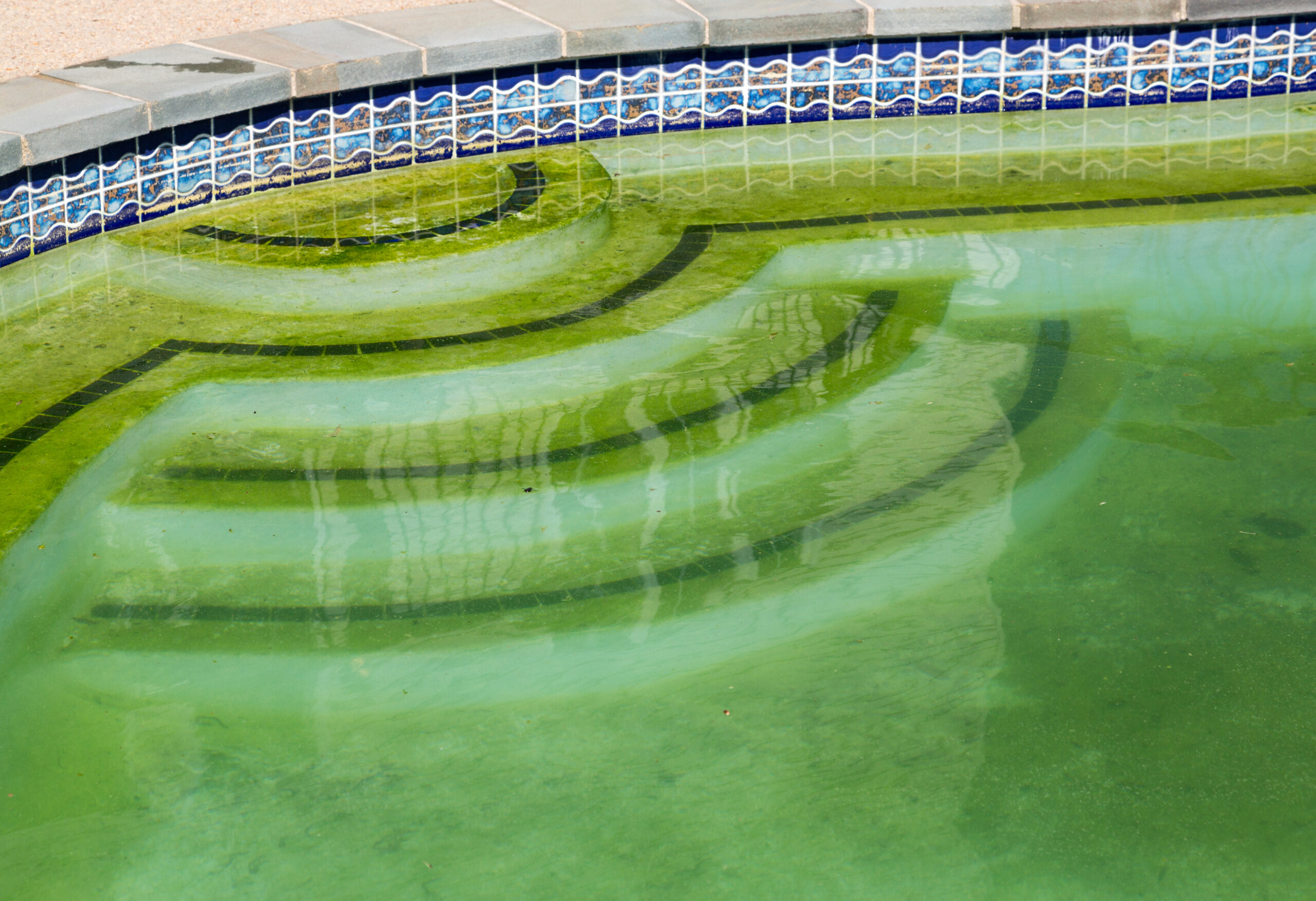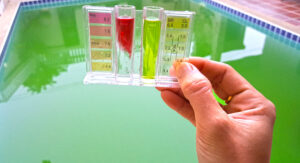
Why Does My Pool Look Cloudy?
There’s no better feeling than starting off your morning with a refreshing dip in your swimming pool. But it’s not quite as refreshing when your crystal clear water has turned cloudy and it feels like you’re swimming in a laguna after a storm.
A cloudy swimming pool is often the result of a chemical imbalance in the water or a blocked filtration system. But here’s the good news: it’s not that hard to fix!
Don’t fret that your swimming pool water will never be crystal-clear again. Here are all the reasons your pool might be cloudy, and what you can do to fix the problem, so you can get back to those refreshing morning dips that let you start your day just right.
Improper Chlorine Levels
Chlorine is the chemical that keeps your swimming pool free from bacteria, germs, and algae. If chlorine levels get too high, calcium doesn’t dissolve properly and causes cloudy water and calcium scaling. If chlorine levels are too low, then chlorine loses its ability to kill bacteria, germs, and algae.
You have to maintain the delicate balance of chlorine levels so the water is suitable for swimming while still keeping harmful germs at bay. Aim for 2-4 ppm (mg/L) and try to never fall below 1 ppm.
What Affects Chlorine Levels?
Chlorine levels can be affected by any number of things. Of course, adding too much or too little chlorine to your pool is an obvious culprit. But mostly it has to do with things being in the pool when they shouldn’t be.
People, for example, have a greater effect on chlorine levels than you’d think! A couple of kids splashing around won’t make much difference, but consider this: the more people in the water, the more sunscreen, beauty products, and sweat there is for chlorine to deal with. This is why public pools require so much maintenance—because all those people keep messing up the chlorine levels.
Nature is the other main cause of chlorine imbalance. Excessive rainfall can dilute chlorine levels in the swimming pool. Likewise, sunlight breaks down chlorine and diminishes its efficiency in destroying bacteria, germs, and algae. And then there are all the little things that can upset your pool’s chlorine levels and cause cloudy water, like dust, soil, sand, debris, leaves, pollen, and even bird droppings.
There’s not much you can do about too many people in the pool, but using a pool cover is a great way to combat Mother Nature. The sun, rain, dust, and debris can’t get into your pool if there’s a cover in the way!
Balance Your Chlorine Levels Daily
The easiest way to maintain your chlorine levels and avoid cloudiness is to check the levels every single day. That way, if they fall or increase beyond the desired threshold, you can immediately correct the issue rather than waiting for the pool to get cloudy or algae to start growing.
Water pH and Chemical Imbalances
While it would be wonderful to have a swimming pool filled with fresh, unfiltered water, it’s just not possible (unless your swimming pool is the ocean). We have to use certain chemical compounds to keep the water clear and free of any cloudiness or bacterial growth.
Calcium, phosphate, and mineral deposits are a few things you’ll want to keep an eye on when balancing your pool’s chemicals. In particular, a high calcium concentration can corrode the swimming pool installation and cause the water to go opaque. There are various tests you can run to determine water chemical levels and establish if there are any imbalances.
Water acidity also matters: too high or too low pH can cause the water to go murky. The optimum pH for swimming pool water is 7.4. It’s the most suitable pH for chlorine to disinfect water, and it’s also the same as the pH in our eyes and mucous membranes, making for a more comfortable swimming experience.
If the water pH goes too high, the chlorine can’t disinfect the water properly and swimmers may experience irritated eyes and dry skin. If the water pH is too low, it will sting swimmers’ eyes and noses, and may cause skin dryness and irritation. The other danger with low pH is the potential damage to the pool itself: high acidity can corrode any metal in the pool (e.g. ladders, light fixtures, pumps, and filters), eat at your swimming pool lining, and lead to bacteria and algae growth.
Both high and low pH levels can cause cloudy water.
Filtration System and Pump Problems
Sometimes, you don’t need to mess around with chlorine, acidity, and chemical balances—the solution to your cloudy water might be as simple as cleaning your pool filter or turning on the pump.
Swimming pools are equipped with a filtration system and a pump to clean the water and keep it crystalline. The pump pulls the water into the filtration system, which captures dirt and debris and clarifies the water before redirecting the clean water back into the swimming pool.
If the filtration system is clogged or malfunctioning, or if the pump is powered off and hasn’t been sucking dirt and debris into the filter, the swimming pool water will soon turn murky and cloudy. The pump and filtration system should be running at least 8-10 hours a day to keep your swimming pool water clean and clear.
Check Your Filtration System Daily
When you’re doing your daily check of the chemical levels in your pool, make sure the filtration system is working as well. A power cut or some other malfunction can stop the system unexpectedly and, in a matter of hours, your swimming pool water will turn cloudy.
Check the cartridge filter as well. If it’s dirty, a good cleaning could solve your cloudiness problems.
Crystal-Clear Swimming Pool Water Is a Delicate Chemical Balance
Clean and translucent swimming pool water depends on a fine chemical balance between chlorine and other chemical compounds. If this harmony is disturbed even slightly, it can cause swimming pool water to go murky and cloudy.
It might be as easy as checking the chlorine levels or turning on the pump and filtration system. But if you can’t fix the problem on your own, don’t hesitate to give your pool maintenance service a call. They’re the experts, and they’ll have your pool crystal clear in no time.
Don’t settle for cloudy waters—you deserve a refreshing swim in a perfectly-balanced pool! Call now Waterside Poolscapes, the top U.S. Pool Builder, on 281-690-4810, schedule a free, no-obligation swimming pool design consultation, email us, or contact us online to bring to life your dream swimming pool!
Should you wish to meet in person, visit our showroom at 25311 Kingsland Blvd #110, Katy, TX 77494. Office Hours: 8:30-4:30 Monday to Friday, CST.


